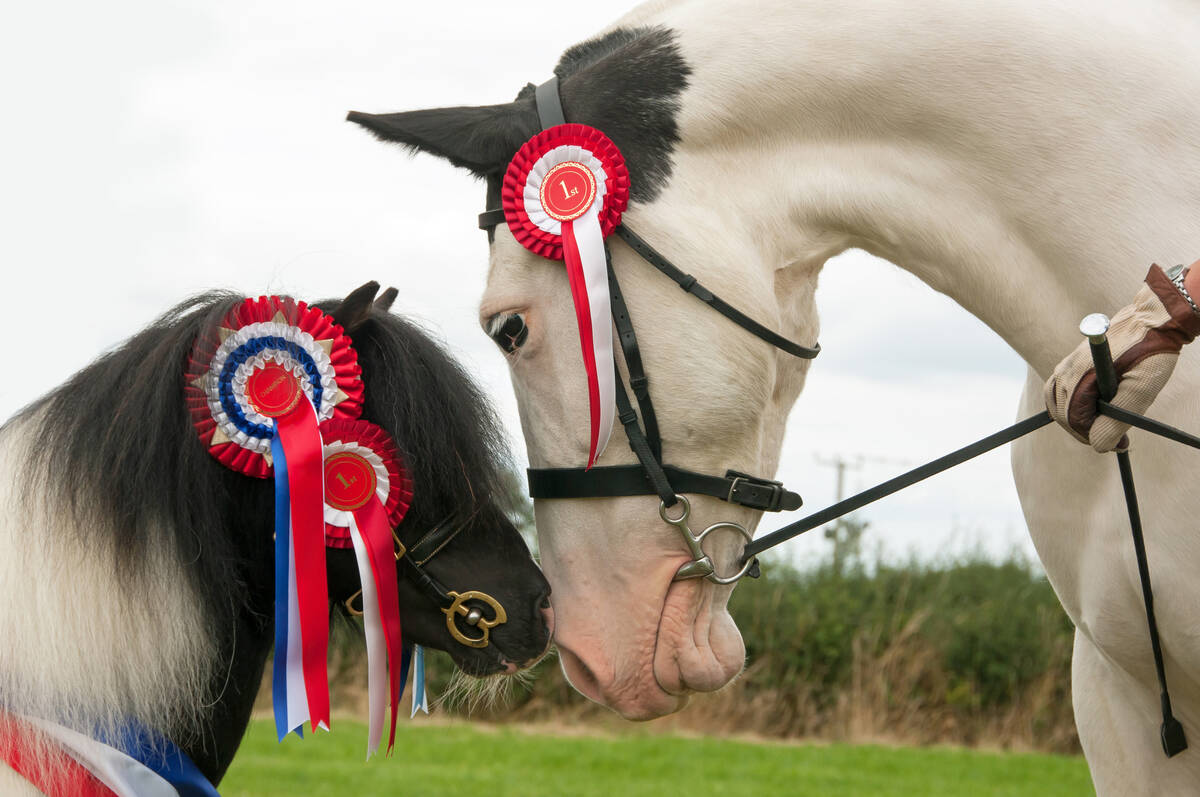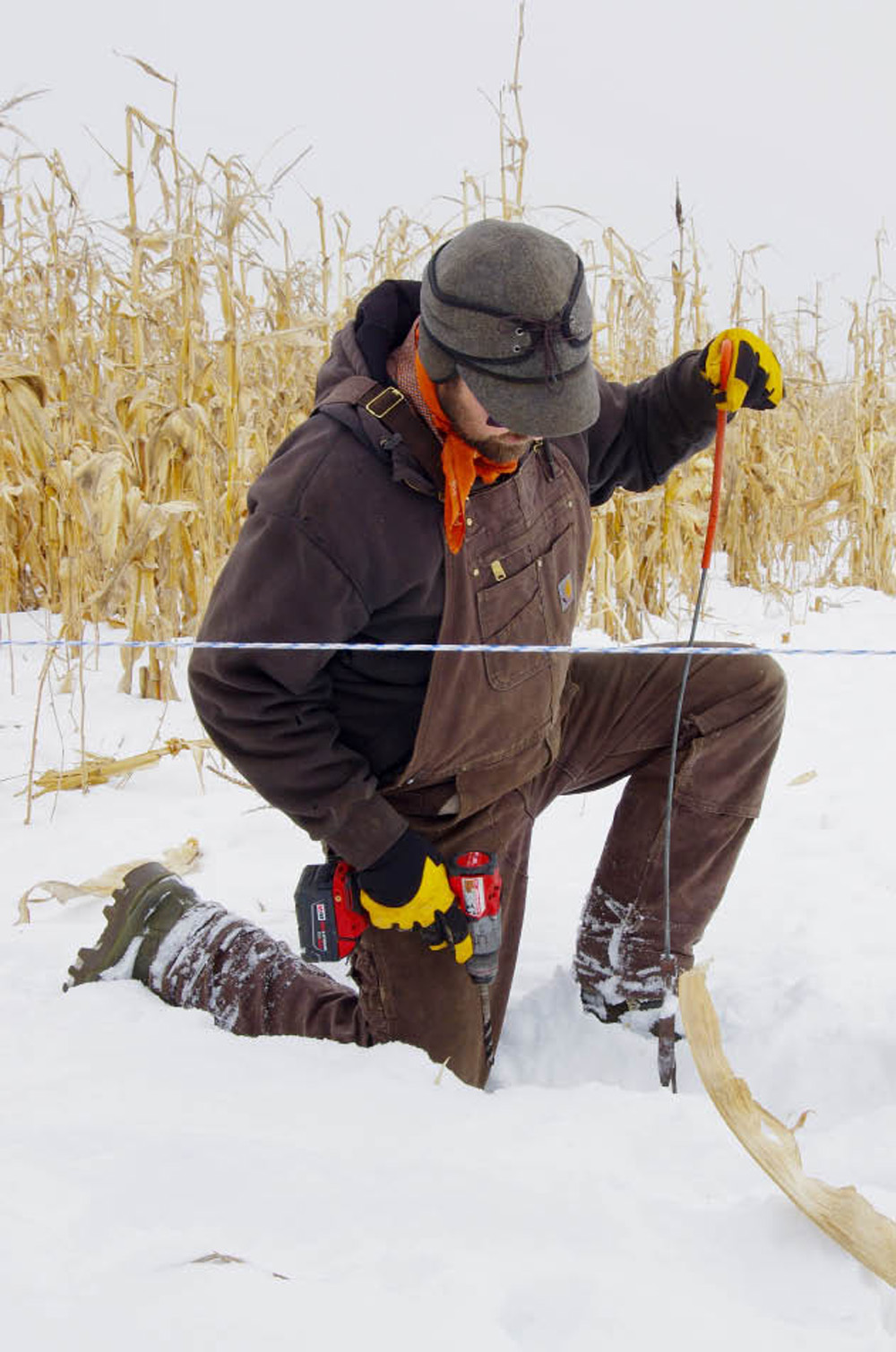The humble pigtail is a common sight on most cattle operations that use rotational grazing. They’re light, easy to stomp into the ground, easy to pull out and it takes only seconds to insert the wire. They’re a key labour-saving tool for the miles of temporary fencing that farmers string and unstring every season.
When it comes to winter corn grazing, a few new tricks are needed.
Why it matters: Like other forms of extended grazing, corn grazing promises a better balance sheet for the farmer if done right, but temporary fencing in winter comes with headaches.
Read Also

Linebreeding horses drives genetic bottlenecks
Too much linebreeding and prioritizing pedigree can narrow genetic diversity and lead to horse health problems in future generations.
In frozen ground, producers might want to splurge a little on post strength, said Brett McRae, who farms south of Brandon.
The nuts and bolts of his off-the-grid corn grazing setup drew interest during a January Grazing Club tour put on by Ducks Unlimited Canada.
Posts made of mild steel are a recipe for frustration and breakage, so users will want either stronger metal or a higher gauge.
McRae is not a fan of rebar. It grounds out too much on a system where keeping a wire hot is already a challenge. It’s also heavy to lug around, which is a bigger factor in winter when managing snow drifts. At a certain point, he drags out the snowshoes.
Posts can still be stomped in if ground isn’t totally frozen, but in the depths of winter, McRae uses a drill and mason bit for the holes. In some cases, he just sticks the post into the snowbank.
The plan
McRae’s system is built with an eye to convenience.
“We try to set up our fields so that they are easy to cross-fence,” he said.
When possible, that means fields that are long and narrow. The 80-acre field featured in the January field tour, for example, was distinctly rectangular.
“We put one fence down the middle of it. Now you’ve got 660-foot-wide grazing corridors that are easy to cross fence and also easy to monitor how much feed you have ahead of you.”

Fenceposts along that central line are spaced to pre-mark future paddocks. Posts in the toured field were laid out at 66-foot intervals to make for easy math – one acre per grazing parcel.
“Now we can use our fence as an acre counter to know how much feed we have ahead of us, how fast we’re going through it, monitor how much the cows are eating per head per day, and then we also try and get it so that they always come back to water without having any sharp corners,” said McRae.
A tractor with a low-hung bucket is used to make alleys by clearing corn stalks along the planned path of temporary cross-fencing. It doesn’t have to be perfect, he noted, just enough for line of sight.
Keeping it live
Weather is another challenge. McRae relies on solar power but in winter the sun doesn’t always co-operate. Even if it isn’t overcast, days are shorter. His solution is to go overboard on his winter fencers because of the sun and grounding issues from snow.
“We’ll use probably double to triple the amount of solar panels as what’s required, just to give us some backup there and to charge that battery quicker when there is a sunny day,” he said.
The panels are set up beside a large plastic storage container, which holds all non-weatherproof elements of his system. The farm could probably use multiple batteries, he said, but one battery is easier.
“We try to have our fencers set up somewhat modularly. So, in the summertime, when we’re running multiple pastures, they can all split off and we can use all of our fencers. And then, in the wintertime, because all of our cows are in one herd, we’ll use a bigger fencer than what we need, more joules than what we need, and then we’ll go way overkill on the solar panels.”
There are still escape artists in the herd, he said, but they’re usually the same cows that are easily returned to the paddock.
















